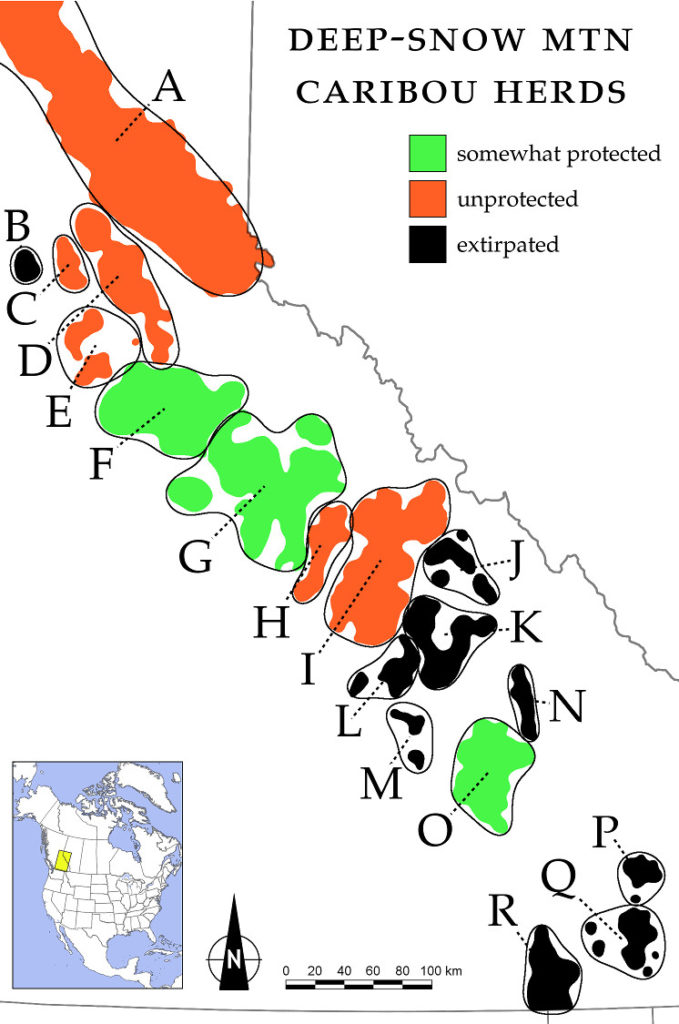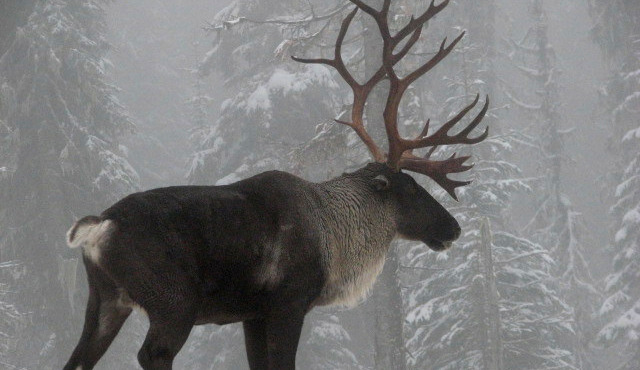The first thing to know about Deep-Snow Mountain Caribou is that they live in the mountains of southeastern British Columbia and nowhere else.
The second thing to know is that they’re currently headed for extinction – of 18 herds that existed in 2005, seven herds have since disappeared and only six are still viable.
The third thing to know is that their plight is deliberate – a long-foreseen outcome of land use decisions by a succession of BC governments, recently abetted by Canada’s federal government.
THIS WEBSITE HAS SIX OBJECTIVES:
(1) to bear witness to deliberate extinction in Canada;
(2) to map the recent decline of a caribou herd long designated for protection;
(3) to call out the agencies and corporations responsible for this decline;
(4) to highlight the downstream social costs incurred by their actions;
(5) to outline a new conservation landscape for Deep-Snow Caribou;
(6) to encourage young Canadians to build a future for Canada’s icon of mountain wilderness.
 The future of Canada’s Deep-Snow Mountain Caribou hangs in the balance. In 2005, there were 2501 deep-snow caribou in the world, in 18 herds. Today, there are 1213 in 11 herds. Only six of the remaining herds are still “viable” according to the usual criteria; and of these, only those herds whose ranges substantially overlap with existing protected areas – the Wells Gray North herd (F) and the Wells Gray South herd (G) – have a good chance of persisting into the long term. Other herds that warrant consideration for habitat protection are the North Cariboo Mountains herd (D), the Hart Ranges herd (A), and perhaps the Central Selkirks herd (O).
The future of Canada’s Deep-Snow Mountain Caribou hangs in the balance. In 2005, there were 2501 deep-snow caribou in the world, in 18 herds. Today, there are 1213 in 11 herds. Only six of the remaining herds are still “viable” according to the usual criteria; and of these, only those herds whose ranges substantially overlap with existing protected areas – the Wells Gray North herd (F) and the Wells Gray South herd (G) – have a good chance of persisting into the long term. Other herds that warrant consideration for habitat protection are the North Cariboo Mountains herd (D), the Hart Ranges herd (A), and perhaps the Central Selkirks herd (O).

